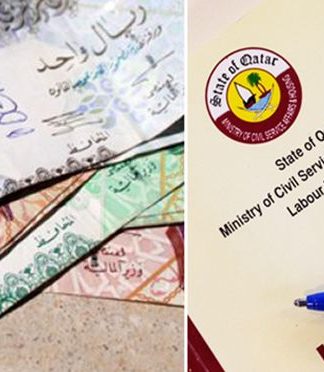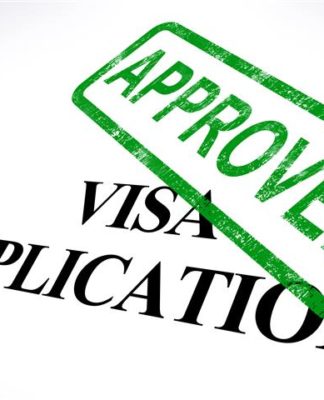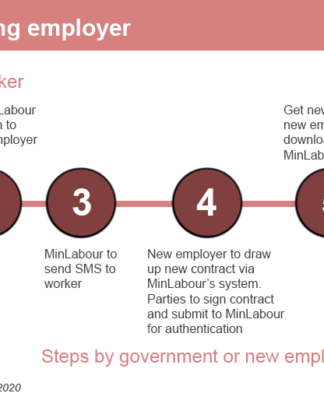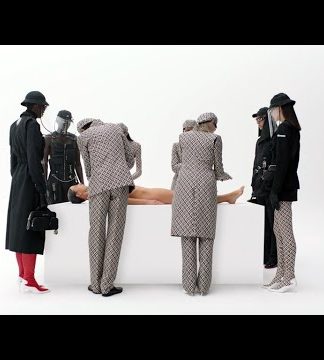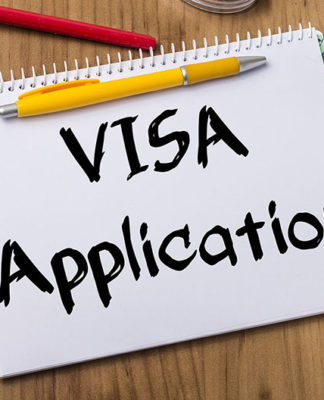JAPAN
Japan enacts chip export controls at US behest
Tokyo puts semiconductor equipment export controls in effect as some push back against alignment with US-led sanctions on China
By SCOTT FOSTER
JULY 25, 2023
Click to share on WhatsApp (Opens in new window)Click to share on Facebook (Opens in new window)Click to share on Twitter (Opens in new window)Click to share on LinkedIn (Opens in new window)Click to share on Reddit (Opens in new window)Click to share on Pocket (Opens in new window)Click to share on Tumblr (Opens in new window)Click to email a link to a friend (Opens in new window)Click to print (Opens in new window)
US President Joe Biden with Japanee Prime Minister Fumio Kishida in Tokyo. Photo: Wikimedia Commons
Japan’s new restrictions on exports of advanced semiconductor production equipment went into effect on Sunday. Drawn up at the instigation of the United States and formally announced three months ago, they are couched in broad terms but are aimed primarily at China.
At this stage, it is difficult to predict their impact on Japanese equipment makers or Japan-China relations, but a group of Japanese politicians are already questioning the wisdom of Prime Minister Fumio Kishida’s seeming eagerness to side with the US in a trade war with China.
These politicians are followers of Ishibashi Tanzan, a journalist-turned-politician who advocated for an independent foreign policy and good relations with the People’s Republic of China in the years after World War II.
Individual export licenses are now required to export 23 specific types of semiconductor production equipment, including cleaning (three items), deposition (11 items), annealing (one item), lithography (four items), etching (three items) and inspection (one item).
Cleaning: Tokyo Electron, Screen Holdings
Deposition: Tokyo Electron, Kokusai
Annealing: Screen Holdings
Lithography: Nikon, Canon
Etching: Tokyo Electron, Hitachi
Inspection: Hitachi, Lasertec
Extreme ultraviolet (EUV) lithography, nanoimprint lithography, photomasks, epitaxial wafers and high-speed valves are specifically mentioned, indicating that restrictions may also affect a few other companies such as Hoya, Toppan and Horiba.
This equipment now falls into the category of items that can be used for military purposes, the export of which is regulated under Japan’s Foreign Exchange and Foreign Trade Control Law.
In a broad sense, they do (through the use of semiconductors in weapons systems, computing and artificial intelligence), but so do other types of semiconductor production equipment that are not on the list.
The vagueness appears to be deliberate, giving the government a free hand to grant or deny export licenses while supporting the US.
LATEST STORIES
Chipping away at US dollar dominance
Chipping away at US dollar dominance
First use: Oppenheimer, Hiroshima and Houtermans
First use: Oppenheimer, Hiroshima and Houtermans
China’s anti-Mario Draghi moment surprises markets
China’s anti-Mario Draghi moment surprises markets
In theory, equipment used at process nodes as large as 45 nanometers might be affected. In practice, the controls might be quite limited. Optimistic and pessimistic views of the restrictions compete, but their actual impact won’t be known until quarterly sales trends emerge and the companies involved provide commentary.
In a worst-case scenario, the impact could be quite severe, putting billions of dollars’ worth of sales at risk and inviting retaliation in the form of Chinese restrictions on exports of critical materials such as gallium nitride, germanium and rare-earth metals.
According to the International Trade Center of the Ministry of Foreign Affairs, Japan accounted for 30% of China’s imports of semiconductor production equipment in 2022. In the fiscal year ending March 2023, 23% of Tokyo Electron’s sales were made in China. Japan’s total trade with China in 2022 was 61% greater than its total trade with the US. There is a lot to lose.
This has not escaped the attention of the Ishibashi Tanzan Study Group, a cross-party association of Diet members founded to discuss policies that promote Japan’s interests as a trading nation and do not simply follow those of the US.
The group is led by Iwaya Takeshi, a former minister of defense from the ruling Liberal Democratic Party (LDP), Shinohara Takashi from the main opposition Constitutional Democratic Party, and Furukawa Motohisa from the Democratic Party for the People.
Furukawa Yoshihisa, a former minister of justice from the LDP, serves as chief secretary. He was quoted by Toyo Keizai (The Oriental Economist) as saying, “Tanzan emphasized that ‘just following America is not good for either Japan or America. We will partner with America, but we will not subordinate ourselves to America.’”
Group’s inspiration
Ishibashi Tanzan was born in Tokyo in 1884. The son of a Buddhist priest named Sugita, he took his mother’s surname, Ishibashi, but later became a priest himself.
After graduating from Waseda University, where he studied philosophy, he went to work as a journalist, first for the Mainichi newspaper and then for the Toyo Keizai magazine, rising to the positions of chief editor and, in 1941, president of the company. Waseda is one of the top two private universities in Japan.
Ishibashi opposed Japanese militarism and colonialism and, after the war, the policies of the US occupation. He was appointed minister of finance by prime minister Yoshida Shigeru in May 1946. Elected to the Diet in April 1947, he was purged a month later for his independent views.
After returning to politics in 1951, he supported the revision of Article 9 of the Japanese constitution, which renounces war as a sovereign right of the nation, and the rebuilding of Japan’s armed forces.
Ishibashi was appointed minister of international trade and industry by prime minister Yukio Hatoyama in 1954 and succeeded him as prime minister in 1956. Forced to resign for health reasons after only two months in office, he remained in politics, visiting the People’s Republic of China in 1959 and opposing the revision of the US-Japan Security Treaty in 1960.
The revised Security Treaty formalized the right of the US to maintain military bases in Japan in return for a commitment by the US to defend Japan from attack. It remains the cornerstone of US-Japan relations today.
In China, Ishibashi met with premier Zhou Enlai. The joint communiqué they issued after the meeting stated:
“Both sides believed that the peoples of China and Japan should hold hands and contribute to peace in [the] Far East and the world.… Mr Ishibashi stated that the Chinese and Japanese peoples should make efforts, based on their actual situations, for exchanges and developments in the political, economic and cultural spheres.
“Premier Zhou concurred with his statement, and pointed out the development of political and economic relations between the two countries should be integrated rather than separated. Mr Ishibashi concurred with this.”
Ishibashi died in 1973, but his ideas lived on as an alternative to the US-centric policies of successive LDP governments. They are enjoying a resurgence now due to concerns about the reliability of the US generated by former president Donald Trump, and the rise of protectionism and escalation of tensions with China under President Joe Biden.
Even if there is no outward change in Kishida’s foreign policy, the Ishibashi Tanzan Study Group can be regarded as an exercise in contingency planning and a signal to China that Japan is not pursuing a single-minded policy – that is, risk hedging from the standpoint of a nation dependent on international trade as opposed to the “de-risking” now touted by the US, which interferes with that trade.
In an opinion piece carried by the Nikkei newspaper under a pseudonym this month, the author wrote that the link between the formation of economic blocs and war is one of the lessons of history and that if Japan is to live as a trading nation, it should not worry about choosing between the US and China but be more focused on taking the market.
A delegation from the study group is reportedly planning to visit China in August.
Follow this writer on Twitter @ScottFo83517667.
















